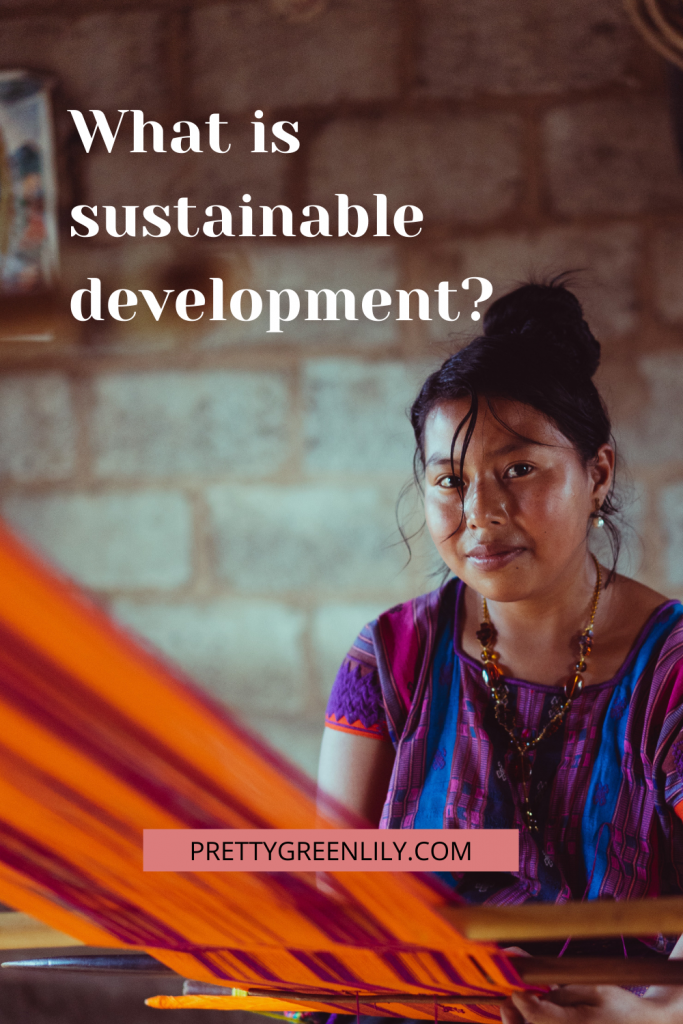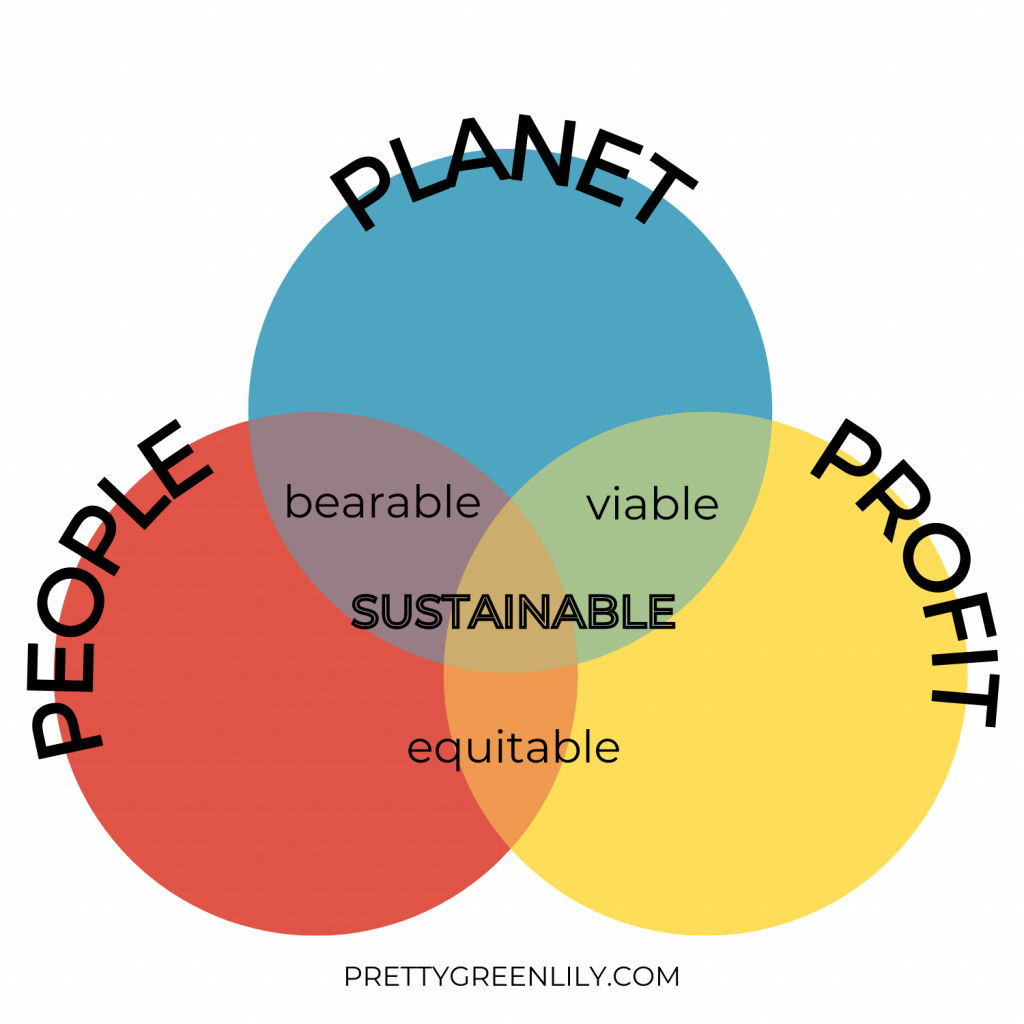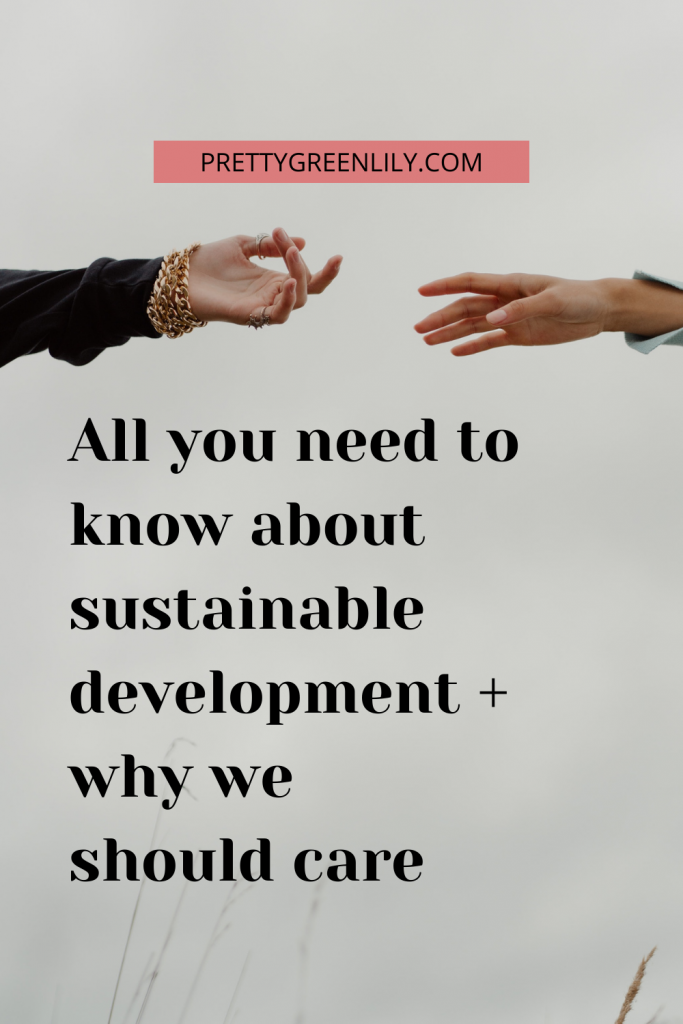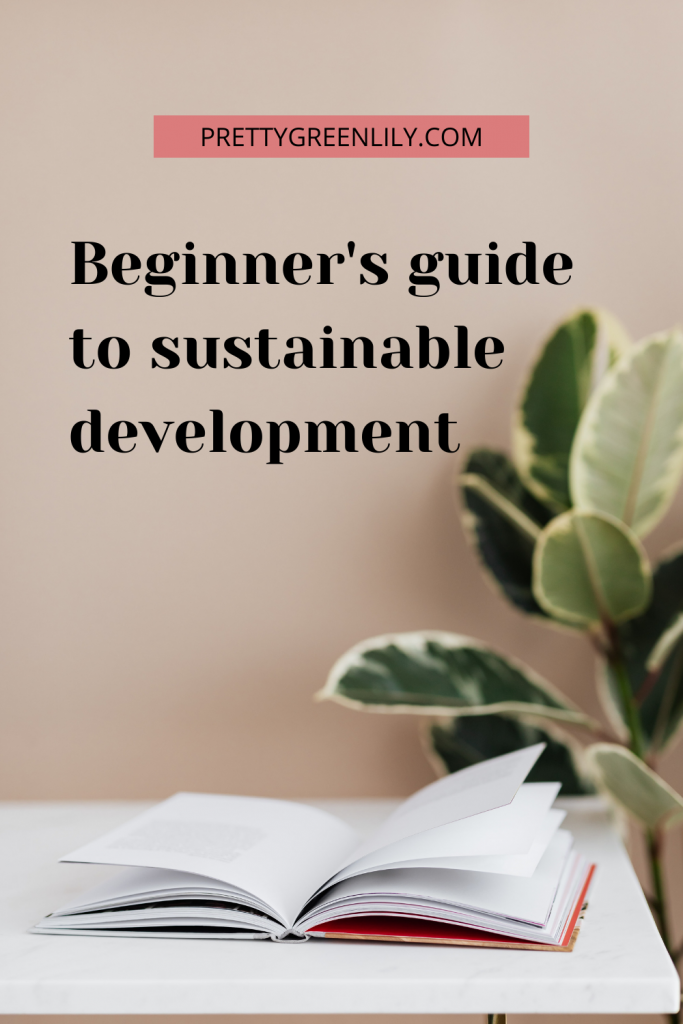SHARE
On this corner of the interwebs, we focus on the environmental side of sustainability, and on how to solve this climate mess we’re in. But we are also aware that we can’t fix anything if we don’t address many other problems that seem to have no direct link to climate at first sight.
Because climate change has a bunch of rather unpleasant roommates. Some are quite predictable, including food scarcity and poverty, and others might be a bit more unexpected, like gender inequality, lack of access to education and illiteracy.
The issue here is that society, economy and environment have a very close relationship that sometimes creates messy situations, and that is why global problems like hunger have to be tackled from these three perspectives. But the good news is that if we’re able to do so successfully, we’ll achieve what we know as sustainable development.
So the thing is that we kind of have a plan to reach global 360º sustainable  perfection
perfection and solve all our political, economic, environmental and social issues: the Agenda 2030 and the Sustainable Development Goals. But it’s not that easy because sustainable development is a whole thing – thus this post.
and solve all our political, economic, environmental and social issues: the Agenda 2030 and the Sustainable Development Goals. But it’s not that easy because sustainable development is a whole thing – thus this post.
Btw, if you want to learn more nerdy things about the SDGs and you can understand Spanish, I gave a lecture in my alma mater not too long ago: you can check it out here!
 PIN ME FOR LATER
PIN ME FOR LATER

Soooo…what is sustainability?
First, sustainability is the word of the decade. But we often use it without really knowing everything that’s behind this seemingly simple concept.
Back in the 80s, some really nice people at the UN were like “hmm, scientists are talking about this thing called global warming. Like the Earth getting hot, or something. Sounds dangerous, idk. Maybe we should have a chat about it.”
And that’s how the UN Brundtland Commission formulated in 1987 this definition of sustainability: “meeting the needs of the present without compromising the ability of future generations to meet their own needs.”
We want to live and let live without endangering our kids’ future. And the coolest part is that we can apply this idea of sustainability to all areas of our existence and lifestyle, and that’s how things like sustainable fashion, sustainable diets or sustainable travel come to be.
And we can follow the same logic to define sustainable development. Then, sustainable development is a sort of development that allows us to live prosperous, peaceful and fulfilled lives, in harmony with our environment, and without endangering our future.
Now I want you to think about that link we were discussing between economy, society and environment. When these three areas thrive without stepping on the others’ metaphorical toes, we can talk about sustainable development. I made a pretty Venn diagram so that you can visualize this relationship better:

Here you see 4 perspectives on development depending on what is prioritized, but what we care about today is the one in the middle: sustainable development.
Today, as you read this, we live in a system that prioritizes the yellow circle ( ), but we want to get to that sweet spot where the economy prospers while all human rights are respected all over the world and our environment is not damaged by human activity. If you want to see it from another perspective, this is a system where we care about the planet and its people, and, as a happy side effect, we end up building economic wellbeing and zero scarcity.
), but we want to get to that sweet spot where the economy prospers while all human rights are respected all over the world and our environment is not damaged by human activity. If you want to see it from another perspective, this is a system where we care about the planet and its people, and, as a happy side effect, we end up building economic wellbeing and zero scarcity.
Of course, this is an oversimplification of reality, but you get the gist of it.
Book recommendation: Doughnut Economics
Ask me what my favorite book is and I will answer Doughnut Economics all day, every day. Its author does a brilliant job at identifying the main 7 issues in our current system, and she offers alternatives that can get us on track to a way of seeing wealth and the economy that hurts no one. 




What’s so hard about reaching sustainable development?
Working towards the dream of susty development means that we need to change many things that we’re used to. A lot of them. And we can go off on a rant on why it’s simple to perpetuate systems of oppression, and how this mindset is keeping us back, but those are (crucial) topics for another day.
So this is what’s so difficult about sustainable development:
- It means that we have to change our economic systems (and our mentalities too). We need to move from a world where growth is infinite and unconditional (GDP, I’m looking at you), and where constant production is a must, towards a model where circularity is the norm and where people and planet matter just as much as wealth. Ya know.
- To achieve it, we also have to stop thinking about production and consumption as siblings that have to be together. They’re not eyebrows, they can easily be cousins, or far relatives. We have to turn to a circular model where resources are used in a smart way and nothing is wasted. We can achieve this by promoting the 3Rs we learnt in school, but also by working on innovation, remaking and upcycling, and making the most of what has already been produced (aka what we already have).
- Sustainable development is also critical of consumerism. Across the global north, we’ve lived all snug and comfy on the lap of consumerism for the past 60 years or so, and we miiight not be ready to change that. But the truth is that if we want to change the whole system, we, as consumers and citizens, can’t stay the same.
- We have countries that produce stuff and countries that consume stuff. By having this sharp divide, we’re valuing the prosperity, happiness and wellbeing of a part of the global population more than that of the other. There’s a clear asymmetry, so how are we hoping to fix an issue as global as, you know, global warming, without first paying attention to global inequality?
And is anyone doing anything?
A bunch of governments are doing something, many citizens are doing a lot, the private sector is…doing…things.
No, really. There’s a lot of will, but the problem is that it’s scattered all over the place.
Even before the Brundtland Commission decided what we should understand as sustainable development, there were a few attempts to carry out some sort of green and ethical action.
For example, in 1992 there was a landmark event, the Earth Summit in Rio de Janeiro. Beautiful city, great beaches, massive Christ Statue. And also the place of the creation of the UNFCCC (United Nations Framework Convention on Climate Change), which is the topic of discussion at the climate COPs each year.
In Rio, they also created the Agenda 21, which aimed at the achievement of a series of goals by the year 2000. We didn’t reach them, so in the year 2000, we set the Goals of the Millennium for 2015. And we didn’t reach them either.
And today we have the Sustainable Development Goals that we want to achieve by 2030. This is so far the most ambitious plan to fix many of our global problems.
I am a big fan of the SDGs. I get all happy and excited when I think about them, so I wish I could tell you that we’re on the right path to achieve them before 2030, but I never lie to you.
The SDGs in a few words
- the SDGs are part of the Agenda 2030
- they focus on planet, people, prosperity, peace and partnerships (for real, I’m not making this up for the sake of alliteration)
- they are a set of 17 goals across social, economic and environmental topics
- each goal has a series of targets (169 in total) and indicators (over 200) to monitor progress
Anyway, is sustainable development possible at all?
I choose to believe it is because the world is full of changemakers that will not settle for less.
We have the knowledge, the will and the plans, we just need to focus on putting them to work and do it fast. And the fact that we won’t be able to reach all these huge goals by 2030 doesn’t mean that we won’t ever reach them.
But what I want you to remember is:
- sustainable development is not a new concept, but we’ve never been this focused on achieving it
- environmental activism isn’t anything new, and it has helped us get where we are today. Do you know who Severn Cullis Suzuki is? She and a group of teens walked so Greta could run, and we should honor their work by not settling with less than we deserve
- excuses like tHeRe’s NoT enOugH mOnEy tO Be gReEn are not valid anymore. Sustainable development is possible, but only if we’re willing to change the system. The green transition creates jobs, and investing in sustainability and climate solutions is today more profitable than ever before. And let’s not forget that investing in them is way cheaper than cleaning up the mess we’ll make if we continue business as usual
 PIN ME FOR LATER
PIN ME FOR LATER


The post What Is Sustainable Development? But, like, really appeared first on Pretty Green Lily.














